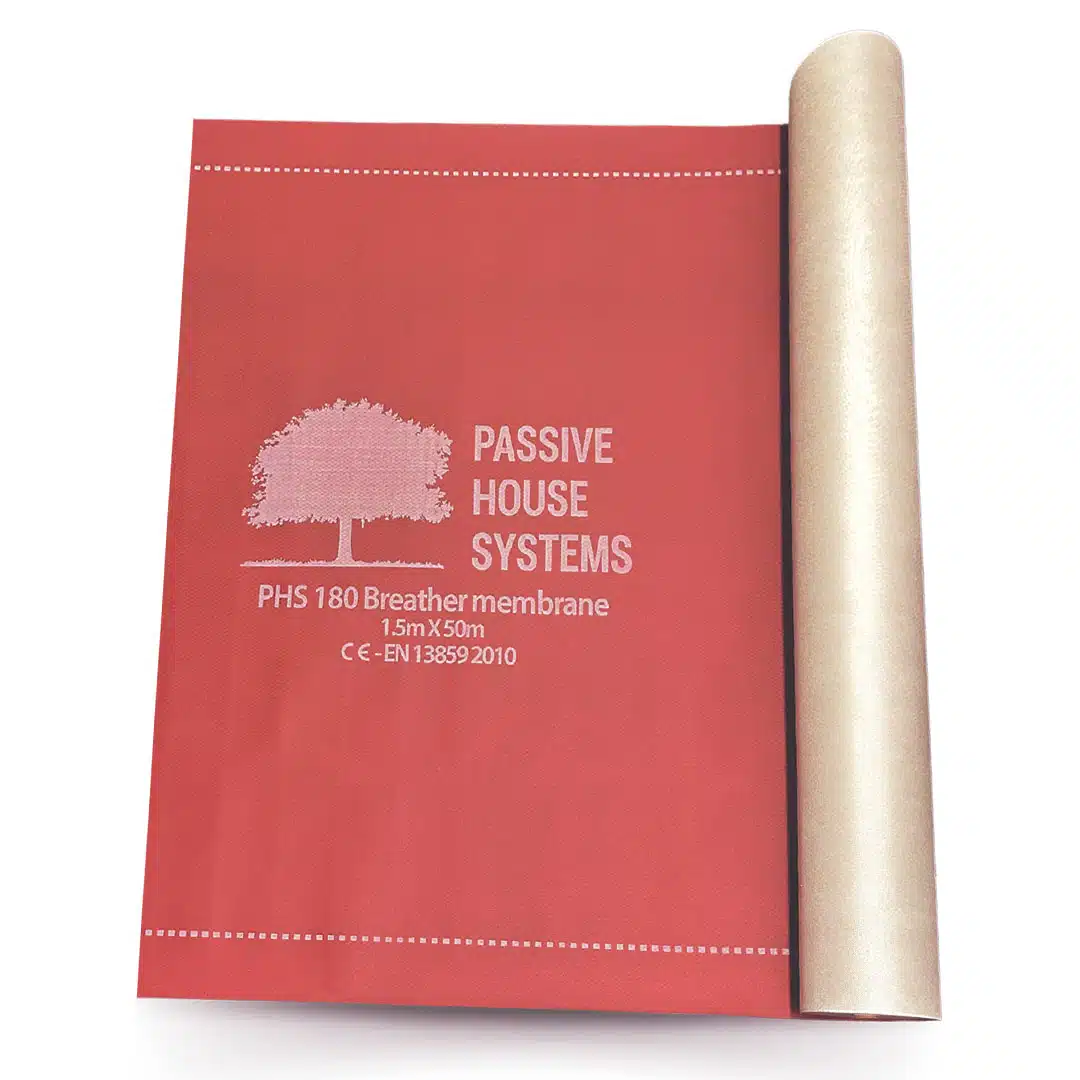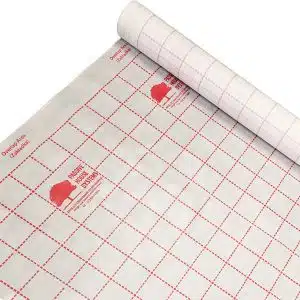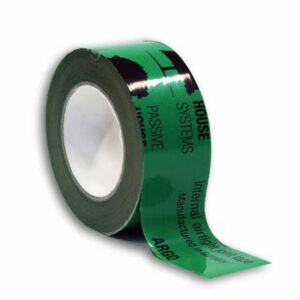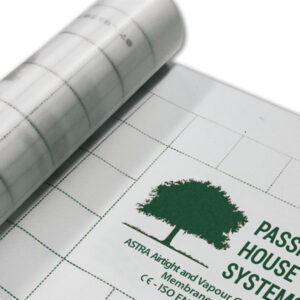Description
The PHS 180 Breather Membrane is a triple layer fabric, high performance breather membrane, made from high tensile spun bonded polypropylene layers, around a micro-porous polypropylene film. It is designed, manufactured and quality assured for use in a fully supported or unsupported tile, slate of metal roof systems. The high vapour permeability and waterproof nature of the membrane, combined with excellent tensile/tear strength and high wind uplift resistance, makes PHS 180 Breather Membrane the professional’s choice as the ultimate breather membrane.
The outer layer (printed layer) forms the functional waterproof surface, the middle layer is the breathable waterproof membrane, and the inner layer protects the membrane from abrasion and damage, also giving additional strength. This enables the fabric to allow moisture vapour to pass through, whilst remaining fully waterproof. The upper surface is burgandy and printed with our trade name and overlap lines.
Advantages
- Three layer membrane.
- Clean and easy to use.
- Lightweight and flexible.
- Excellent tensile and tear strength.
- Waterproof membrane.
- Long term durability.
- UV stable (3 months exposure).
- Warm and cold roof application.
Application
PHS 180 Breather Membrane must be installed in accordance with the relevant sections of BS 5534:2018 and NSAI S.R. 82:2017 and it’s fixing instructions.
PHS 180 Breather Membrane is designed as a secondary barrier to wind driven rain and snow, it should not be considered a primary waterproofing layer. Whilst the product is UV stable for up to 3 months exposure, good roofing practice dictates that the primary waterproofing finish (e.g. tiles, slates etc.) be applied as soon as practically possible.
PHS 180 Breather Membrane should be unrolled across the roof, starting at the eaves and working up the roof, it must be laid printed side up. With normal slates and tiles the membrane should be installed draped to a maximum 15mm into the void between the rafters in line with BS 5534:2018 and NSAI S.R. 82:2017 it can then be secured with the tiling battens.
This will leave sufficient space between the PHS 180 Breather Membrane and the tiles/slates for drainage and ventilation. When installed as a fully trusses supported system, is laid over on trusses and secured with counter battens. Alternatively the membrane can be installed over counter battens and fixed at 200mm centres using corrosion resistant galvanised clout nails. Tiling battens are fixed to the counter battens leaving a minimum airspace of 25mm between the roof sheet underlay and the tiles for drainage and ventilation.
In unventilated roof systems, vapour control measures are required below the insulation layer to restrict the flow of moist air from within the inhabited building into the roof space.
PHS 180 Breather Membrane should be turned up at abutments at least 100mm to prevent rain and snow being blown into the roof-space. 600mm reinforcing strips should be fixed at hips, ridges and valleys.
At the eaves, a felt support tray should be installed to prevent ponding behind the fascia. PHS 180 Breather Membrane should be laid over the support tray stopping short of the roof tile tails to prevent UV degradation of the underlay.




